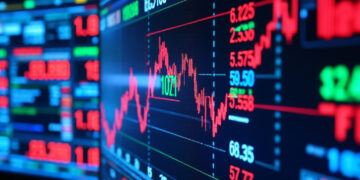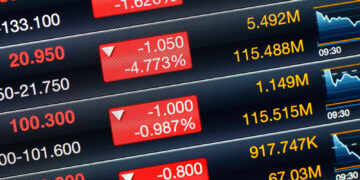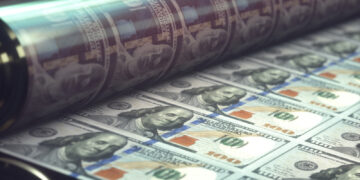According to a study published by the Bureau of Economic Analysis on Thursday, the economy of the United States had positive growth for the first time in 2022 during the third quarter, calming concerns about the possibility of a recession, at least temporarily.
The advance estimate indicates that the Gross Domestic Product (GDP), the total value of all goods and services generated from July through September, rose at an annualized rate of 2.6%. That came in higher than the 2.3% predicted by the Dow Jones.
This reading comes after three consecutively negative quarters to start the year, which satisfies a widely recognized recession definition, despite the fact that the National Bureau of Economic Research is generally regarded as the authority on determining when economies are expanding or contracting.
Real Gross Domestic Product Changes
The growth was majorly driven by a reduction in the trade deficit, which was anticipated by economists and is regarded as a one-time event that would not be replicated in subsequent quarters as a factor in driving growth.
In addition, increases in consumer spending, nonresidential fixed investment, and government spending contributed to the growth of GDP. The study highlighted a continuous movement away from spending money on products and more toward spending money on services, with spending on the latter growing by 2.8% while spending on goods decreased by 1.2%.
According to the BEA, the increases were canceled out by falling levels of residential fixed investment and private inventories.
In other business and financial headlines from Thursday, weekly unemployment claims inched up to 217,000, but this number was still lower than the 220,000 that was anticipated. Additionally, orders for durable goods climbed by 0.4% in September compared to the previous month, which fell short of the 0.7% growth that was anticipated.
The release of this research comes when policymakers are engaged in a fierce struggle against inflation, which is currently hovering near its highest levels in more than 40 years. Price increases can be attributed to various variables, most of which are associated with the Covid epidemic.
However, the enormous fiscal and monetary stimulus still being processed by the financial system is also a driving force behind these price increases. The rate of growth in consumer spending, as measured by personal consumption expenditures, was just 1.4% for the quarter, which is a drop from the 2% rate of growth seen in Q2.
The gross private domestic investment fell by 8.5%, extending the downward trend that began in the second quarter when it dropped by 14.1%. The residential investment index, which measures homebuilding activity, dropped by 26.4% in the third quarter, following a drop of 17.8% in the second quarter. This decline reflects a significant downturn in the real estate market.
The chain-weighted price index, a measure of the cost of living those accounts for consumer behavior, increased by 4.1% for the quarter, significantly lower than the prediction from Dow Jones of a gain of 5.3%. This was primarily due to lowering energy prices.
In addition, the price index for personal consumption expenditures, a crucial inflation metric for the Federal Reserve, climbed by 4.2%, a significant drop from the prior quarter’s 7.3% gain. Prices at the core of the economy, excluding changes in the cost of food and energy, rose by 4.5%, roughly in line with what was anticipated on Wall Street.
These increases are intended to slow the flow of money through the economy and to tame a jobs market in which the number of openings outnumbers the number of available workers by nearly 2 to 1. This situation has caused wages to rise and contributed to a wage-price spiral, which economists fear will tip the United States into recession.
At its meeting the following week, the Federal Reserve is widely expected to vote in favor of a fourth consecutive increase in the interest rate of 0.75 percentage points. However, following this meeting, the Fed may decide to slow the pace of future increases to give officials sufficient time to evaluate the effect of policy on the current state of the economy.
According to Preston Caldwell, head of U.S. economics for Morningstar, “The Fed will continue to err on the side of overtightening, which is sensible given the need to limit the risk of inflation being entrenched at high levels.” “The Fed will continue to err on the side of overtightening”
When the BEA releases a report on Friday containing personal consumption expenditure prices for September, policymakers will have another opportunity to examine inflation data and one that is more up-to-date. It is anticipated that this metric will demonstrate that core prices, which do not include fluctuations in the cost of food or energy, increased by 5.2% over the previous year and by 0.5% over the previous month.






